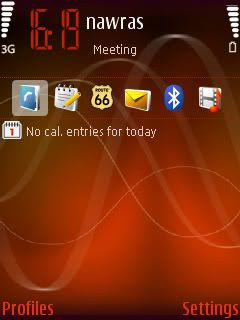Unfortunately, The article that the week published has had no effect whatsoever on the practice of importing previously flooded and salvaged cars to Oman. There are literally thousands of them, and they can be found at every single small dealership in Muscat, as well as parking lots where they are being passed off as a slightly used family car.
Know this: The dealers will lie outright to you about the history of the car, and the repairs made to it. Even if you ask specifically, and show them where the problem is, they will adamantly deny any problems with the car, and it's history.
While a flooded car can be repaired to a state of working order, two of the wrecked and salvaged cars I saw were potential death traps. Engine mounts cracked, Chassis twisted, Airbags removed and not replaced, bending or cracking where the seat belts mount into the frame. You would not want to be in one of those for your own personal head on collision. It's a safety issue, plain and simple.
Anyway, I never really finished the series on the wrecked cars that are flooding the market here. The final chapter ought to be a quick primer on how to know if your "new" car is actually salvage. And how to tell a legitimate American import (we own three) from a Salvage import. There are lots and lots of legitimate American imports available, or ones that were imported through Dubai from US auctions because they were seized in a drug raid, repossessed, or failed Emissions standards. And they can be really great cars! My Beloved "beast" was seized and auctioned in New York, found it's way over here, only to be drowned in Gonu.
- If you have a friend living in the states, have them use thier credit card and buy you a subscription to Carfax. Check all the vin numbers, on everything you look at. This covers ALL cars, regardless of make, as long as they were at some time registered in the states. Sadly, there is no equivalent service here that reports on salvaged cars from Europe, the far east, or Australia.
If you don't have access to Carfax, then do the following, in the following order.
- First check the wing mirror on the passenger side. If the writing is in English, then you have found a car which is American Spec, but could still be legitimate.
- Check for stickers that reveal the cars original whereabouts. "Louisiana state troopers association" "New Orleans city council parking" etc...
- Check the the Odometer. All legitimately imported cars that came here direct, without a stop off in Dubai will have had the odometer switched to measure Kilometers, not miles.
- Get on the highway, look for a sign telling you a shell station is 1km away, and calibrate against that. If the car measures in miles, it's very likely salvage or flooded.
- Now that you are suspicious... Check the cigarette lighter, and beneath or behind the ash tray, check the ones in the back seats too. If you find rust, it's likely flooded, if not, it's maybe salvage.
- Look for over spray from where it's been repainted. Good places to check are the rubber around body panels, under the wheel wells, door jams, inside the trunk where the spare tyre goes. Ask yourself if a car of that age really needed to be repainted.
- Climb in and lay upside down in the drivers foot well. Look up, waaay up, into the fuses, and behind the dash to where the steering column goes through. See rust? I bet you Do! With an unflooded car there shouldn't be rust anywhere inside.
- Make friends with a mechanic you trust in Wadi Kabir. Take the car to him and have him check the alignment on the frame, and check the engine mounts and seatbelt mounts, check for the actual presence of airbags, and that they haven't just been cut out. Have him Put the thing up on the lift and scope out the undercarriage and drive train carefully.
- Lastly, ask yourself why someone would go to the trouble of importing a car all the way over here. If the car is one that could be easily bought from a dealership here or in Dubai, it's likely here for all the wrong reasons.
And that's it on the cars. Next week, something new and different.










